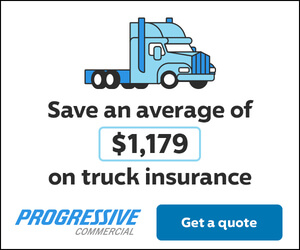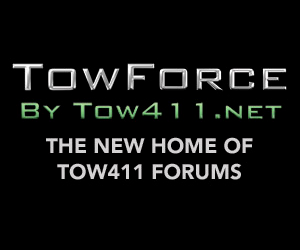Protecting employees working on or near a roadway should always be a number one safety concern. One way to do so is to provide your employees with the proper personal protective equipment (PPE). Selecting the proper PPE is more involved than employers may understand.
Hazard assessment
To determine the need for PPE, OSHA requires employers to conduct a hazard assessment per 29 CFR 1910.132(d). This hazard assessment must determine if hazards are present, or are likely to be present, that require the use of PPE. If such hazards are discovered, then you must select, and have each affected employee use, the types of PPE that will protect them.
When an employee is dispatched to assist/tow a vehicle there are several issues to consider:
- What are the conditions? What is the visibility, weather, temperature, traffic?
- What will the tow driver do at the scene? Work on the disabled vehicle onsite or tow it to a different location?
- How close to the moving traffic will the employee be?
Answers to these questions will help you perform your hazard assessment.
Next, you have to communicate those PPE selection decisions to the workers and then find and fit the PPE for each affected employee.
Types of PPE
The hazard assessment should determine the need for the specific types of PPE. Some of those could include:
- High-visibility apparel
- Eye protection
- Head protection
- Foot protection
- Hand protection
- Cold-weather clothing
- Hot-weather clothing
- Other types of PPE
High visibility apparel—all workers (ANSI 107-2004)
When you dispatch a driver and tow vehicle to an accident scene make sure you provide the driver with the appropriate high-visibility safety clothing. This would include apparel that meets the Performance Class 2 or 3 requirements of the ANSI/ISEA 107–2004 publication.
The 2009 Edition of the Manual on Traffic Control Devices (MUTCD) states at Section 6D.03 Worker Safety Considerations, Standard 04:
All workers, including emergency responders, within the right-of-way who are exposed either to traffic (vehicles using the highway for purposes of travel) or to work vehicles and construction equipment within the TTC zone shall wear high-visibility safety apparel that meets the Performance Class 2 or 3 requirements of the ANSI/ISEA 107–2004 publication entitled “American National Standard for High-Visibility Safety Apparel and Headwear” (see Section 1A.11), or equivalent revisions, and labeled as meeting the ANSI 107-2004 standard performance for Class 2 or 3 risk exposure, except as provided in Paragraph 5. A person designated by the employer to be responsible for worker safety shall make the selection of the appropriate class of garment.
If you also dispatch a flagger to assist your driver, the MUTCD has specific requirements. Section 6E.02 High-Visibility Safety Apparel Standard 01 states:
For daytime and nighttime activity, flaggers shall wear high-visibility safety apparel that meets the Performance Class 2 or 3 requirements of the ANSI/ISEA 107–2004 publication entitled “American National Standard for High-Visibility Apparel and Headwear” (see Section 1A.11) and labeled as meeting the ANSI 107-2004 standard performance for Class 2 or 3 risk exposure. The apparel background (outer) material color shall be fluorescent orange-red, fluorescent yellow-green, or a combination of the two as defined in the ANSI standard. The retroreflective material shall be orange, yellow, white, silver, yellow-green, or a fluorescent version of these colors, and shall be visible at a minimum distance of 1,000 feet. The retroreflective safety apparel shall be designed to clearly identify the wearer as a person.
Any employee that is dispatched to an accident or breakdown scene must wear high-visibility safety apparel that meets ANSI 107-2004 standard performance for Class 2 or 3 risk exposure.
High visibility apparel—emergency responders (ANSI 207-2004)
The 2009 MUTCD also has an option for emergency and incident responders and law enforcement personnel. Section 6D.03 Worker Safety Considerations, Option 05 says:
Emergency and incident responders and law enforcement personnel within the TTC zone may wear high visibility safety apparel that meets the performance requirements of the ANSI/ISEA 207-2006 publication entitled “American National Standard for High-Visibility Public Safety Vests” (see Section 1A.11), or equivalent revisions, and labeled as ANSI 207-2006, in lieu of ANSI/ISEA 107-2004 apparel.
There is also a newer version of ANSI/ISEA 207-2006. It is the 2011 edition (ANSI/ISEA 207-2011). In Appendix B there are three examples of what is called the “public safety sector” vest. Examples one and two have areas on the vest where the identification text (Fire Service, EMS, Police, etc.) can be placed. The third option does not show any identification text.
What types of personnel are considered to be “emergency and incident responders and law enforcement personnel?” ANSI/ISEA 207-2011 discusses “Identification of Personnel” at section 6.3, which says that, “Public safety industries may be identified with the specific names and colors: Red: Fire Service; Green: Emergency Medical Service (EMS); Blue: Law Enforcement.”
With this said, it appears that only public safety personnel can wear the ANSI 207 class vests. Other employees must wear the ANSI 107 class vests.
These types of high-visibility safety apparel will help protect your employees. When an employee is getting a vehicle ready to be towed, the drivers in oncoming vehicles must be able to see, and take measures to avoid, that employee.
Eye protection
OSHA requires that appropriate eye protection be provided when there is a hazard from flying particles, molten metal, liquid chemicals, acids or caustic liquids, chemical gases or vapors, or potentially injurious light radiation.
If you have employees that are working near moving traffic they could be exposed to road debris being picked up and thrown around. Also, crawling under and around vehicles can exposed them to dirt, road salt, and fumes that can fall into or enter the eyes.
Keeping the debris and related particles out of workers eyes is one of the main reasons to wear eye protection.
Safety glasses (either spectacles or goggles) are a common form of eye protection. If there is a severe hazard from flying objects then a face shield may also be necessary. At the least, safety glasses with side shields should be used.
OSHA requires that eye and face protection devices comply with the ANSI Z87.1-1989 or ANSI Z87.1-2003 consensus standards (American National Standard Practice for Occupational and Educational Eye and Face Protection).
Head protection
Hard hats must be worn when there is the potential for injury to the head from falling objects or bumping the head on an object. Crawling around and under vehicles can expose employees to these hazards. Every call may not require a hard hat to be worn; however, they should be available when needed.
OSHA requires that head protection comply with:
- ANSI Z89.1–2003, American National Standard for Industrial Head Protection; or
- ANSI Z89.1–1997, American National Standard for Industrial Head Protection; or
- ANSI Z89.1–1986, American National Standard for Personnel Protection—Protective Headwear for Industrial Workers—Requirements.
Foot protection
Protective footwear must be worn by employees working in areas where there is a danger of foot injuries due to falling or rolling objects, or objects piercing the sole, and where employees’ feet are exposed to electrical hazards. Wrecked vehicles shed parts and pieces that could certainly fall into these categories.
Protective footwear must comply with any of the following consensus standards:
- ASTM F–2412–2005, Standard Test Methods for Foot Protection and ASTM F–2413–2005, Standard Specification for Performance Requirements for Protective Footwear; or
- ANSI Z41–1991 or ANSI Z41–1999, American National Standard for Personal Protection—Protective Footwear.
Slipping and falling is another hazard that could be encountered, especially when working in icy conditions. There are specific types of devices that attach to boots that provide added traction in these conditions.
Hand protection
Appropriate hand protection must be used when employees’ hands are exposed to hazards such as those from skin absorption of harmful substances, severe cuts or lacerations, severe abrasions, punctures, chemical burns, thermal burns, and harmful temperature extremes. Wrecked vehicles often have hazards like these. In addition, handling chains and wire rope used to upright and tow vehicles can be hazardous.
Cold-weather clothing
Depending on location of your operations, the winter season may bring cold temperatures, rain, wind (and accompanying low wind chills), and snow and sleet. These hazards can lead to frostbite; hypothermia; and slips, trips, and falls.
In the winter months provide employees working outdoors with the proper outerwear, boots, headwear, and hand protection. In addition, certain winter conditions can result in reduced visibility, so high-visibility safety apparel can be a necessity.
Hot-weather clothing
The summer season can start early for some parts of the country. Hot-weather clothing is a must for employees working outdoors. Avoid dark-colored clothing and clothing that doesn’t breathe. Hats are recommended to be worn when working in direct sunlight.
Other types of PPE
In addition to the types of PPE mentioned, there may be additional categories needed. Examples of these could include respiratory protection and clothing treated with insect repellant.
Wrap up
Employee well-being is always a concern, especially for those working on or near a roadway. Your hazard assessment will determine which hazards are present, or likely to be present, that require the use of PPE by employees. Properly sizing and providing that PPE can send those workers home safely each and every day.




